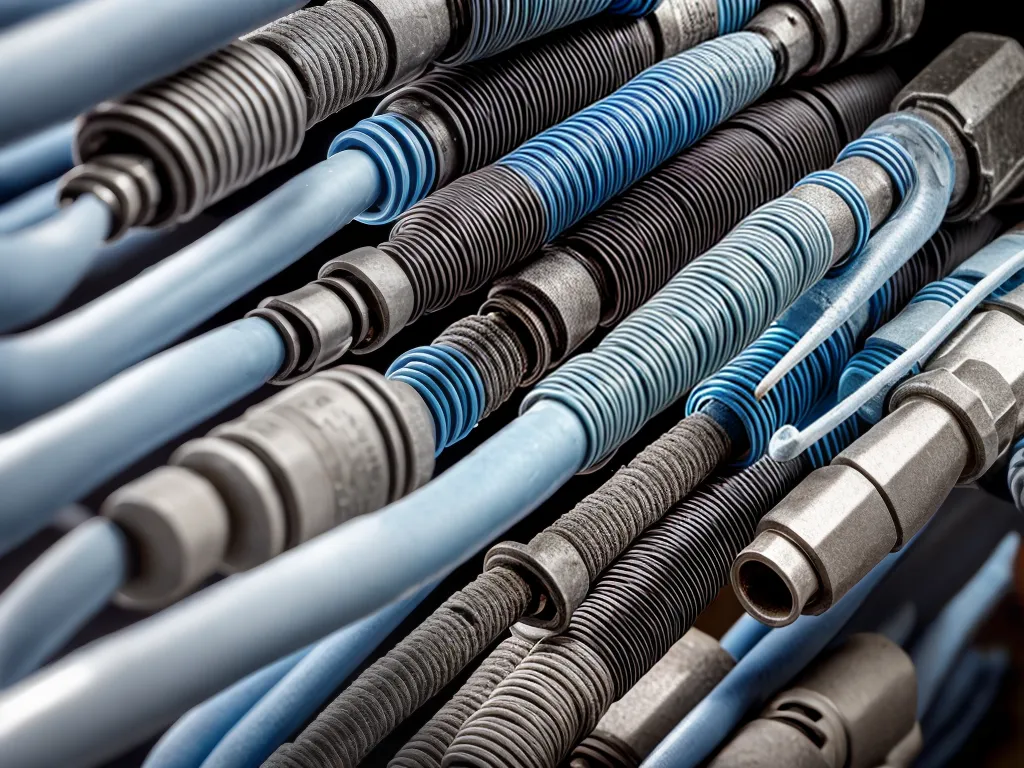
The BS 6724 electrical installation cable selection guide was an important document that helped electrical contractors, electricians, and electrical engineers select the appropriate cables for installations in the UK. However, this guide is now obsolete and no longer used. As an electrical professional, I've learned effective strategies to work around this obsolete standard and properly select cables in its absence.
What Was BS 6724 and Why Is It Obsolete?
BS 6724 was a specification published by the British Standards Institution (BSI) that provided recommendations for selecting cables in electrical installations operating at voltages up to 600 V a.c. It aimed to help professionals choose the right cables based on factors like operating voltage, environmental conditions, diversity, and more.
However, BS 6724 was withdrawn and declared obsolete in 2014. The standard became outdated as cable insulation technology and testing methods improved. Its cable current carrying capacity tables were no longer accurate. As a result, the guide could not address modern cable types properly.
Key Factors to Consider For Cable Selection Without BS 6724
Since BS 6724 is obsolete, I now rely on a range of other factors and resources when selecting cables, including:
Cable Parameters
-
Voltage rating - Cables must be rated for operating voltage of the electrical system.
-
Current carrying capacity - Depends on cable size, material, insulation etc. values must be de-rated for conditions.
-
Insulation material - PVC, rubber, XLPE etc. Environmental conditions determine suitable material.
-
Conductor material - Copper or aluminium. Copper is superior. Aluminium requires larger cross-sections.
-
Environment - Cables in air, buried underground, in conduits etc. affect selection.
Installation Considerations
-
Diversity - Not all connected loads operate simultaneously. Diversity factors reduce needed capacity.
-
Grouping - Cables bundled together require de-rating for heat dissipation.
-
Termination temperatures - Limits maximum temperatures cables can withstand when terminated.
-
Voltage drop - Long cable runs require larger conductors to control voltage drop.
-
Short circuit currents - Cables must withstand fault currents without damage.
Relevant Standards and Resources
-
IET Wiring Regulations (BS 7671)
-
Cable manufacturer technical specifications
-
IEEE and IEC international standards
-
Industry reference tables e.g. from Electrical Safety First
-
Software tools for cable sizing calculations
Good Practices for Cable Selection Without BS 6724
Based on experience, here are some good practices I follow to select appropriate cables:
-
Conduct detailed electrical load analysis - Accurately determine cable capacity needed. Consider demand factors, diversity, ambient temperature etc.
-
Research cable options extensively - Consult manufacturer specs, standards, reference tables etc. Make informed selections.
-
Use specialised cable sizing software - Computer tools model parameters precisely. Quickly compare options.
-
Apply safety factors - Size cables above expected capacity needs. Allows for future increases and contingencies.
-
Validate with thermal measurements - After installation, use thermography scans to check cable temperatures are within limits.
-
Get expert reviews - Have experienced electrical engineers review cable selections before procuring cables.
-
Test and inspect installations - Perform commissioning and periodic tests to verify the system functions safely.
Key Takeaways When Working Without BS 6724
The obsolete BS 6724 standard made cable selection straightforward. Without it, the process requires more care and effort. The key lessons I've learned are:
-
Cable selection depends on many interdependent factors beyond just current ratings.
-
Accurately determine electrical design parameters through detailed analysis and modelling.
-
Extensively research cable options using all available standards and manufacturer data.
-
Employ specialised software tools for more accurate cable sizing.
-
Size conductors generously and incorporate safety factors. Validate selections empirically.
-
Get expert reviews of cable selections before installation.
-
Verify the installation through rigorous testing and inspection.
Although selecting cables is harder without BS 6724, it can be done effectively using good engineering practices. Careful design analysis, research, modelling tools, safety factors and field verification enable making optimal cable choices.